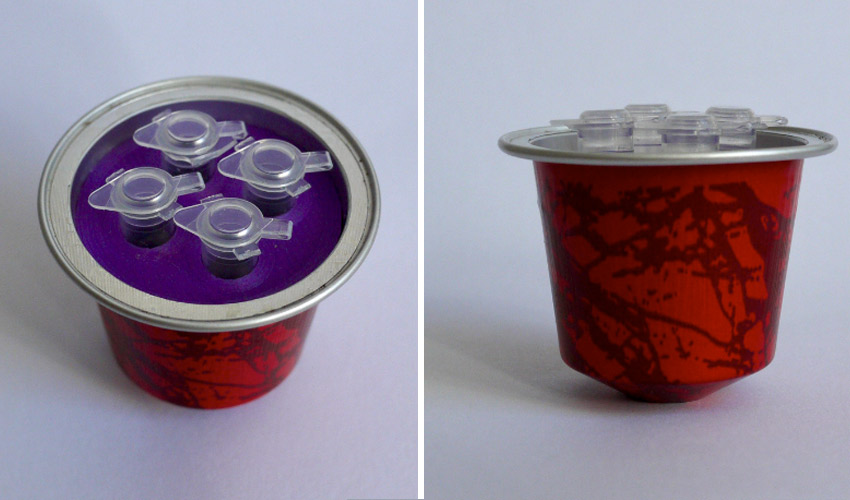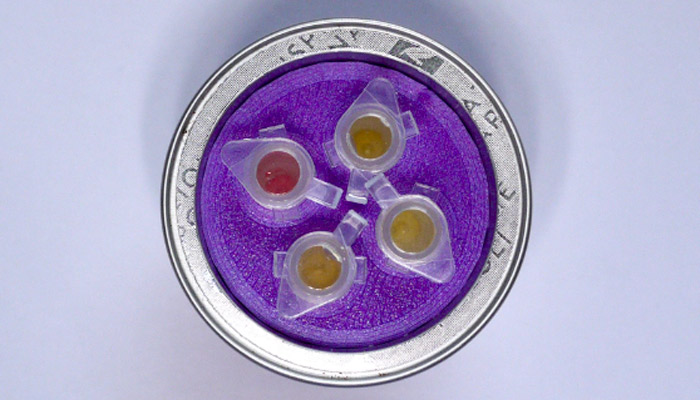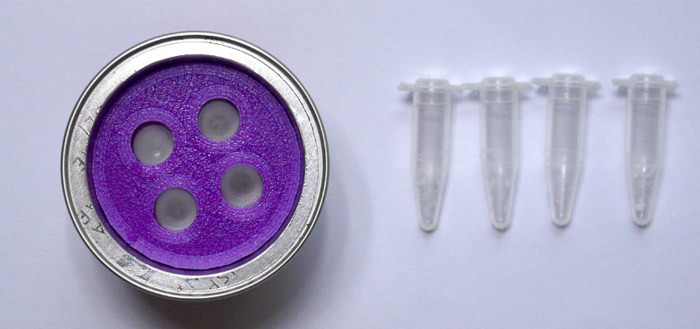Meet CoroNaspresso, the COVID-19 Test in a Coffee Capsule

Testing for COVID-19 with a coffee capsule and a pan? This is the original idea of a scientist from the University of Wageningen in the Netherlands. Hoping to reduce the cost of COVID-19 detection tests currently offered on the market, he used an empty aluminum coffee capsule and turned it into a small chemical reactor. What makes this project particularly interesting to us is that he 3D printed a plastic holder that can hold 4 tubes to perform the tests. Called CoroNaspresso, this new screening method could increase the number of tests performed each day while facilitating the process. It would cost about 24¢ (0.20€).
Vittorio Saggiomo is an Italian chemist in the Bionanotechnology group at Wageningen University in the Netherlands. Last March, he tackled the problem of centralized PCR testing, explaining that the means of screening should nowadays be easier to do as well as cheap in order to produce tests in large quantities. To do this, he relied on loop-mediated isothermal amplification (LAMP), a low-cost technique for detecting certain diseases. It can be performed at a constant temperature (65°C) and no laboratory equipment is required. Specifically, the saliva sample is heated and, using pH indicators, changes color if Sars-CoV-2 is present. Vittorio Saggiomo explains, “The color change is very striking: negative samples are pink and positive ones are yellow.” But how do you maintain a constant temperature while remaining accessible?

Positive results are yellow (photo credits: Vittorio Saggiomo)
CoroNaspresso, between coffee and 3D printing
This is where the coffee capsule comes in: an everyday product, it served as a container that could be dipped into a pot of boiling water. The capsule is filled with a phase change material, specifically RT64HC, a wax that melts between 63 and 65°C (145.4-149°F). It is an inexpensive material (about €13 or $15 per kilo) whose melting/solidification process takes about 25 minutes (5 grams for 1 liter of water). A 3D-printed holder holds the 4 tubes of 200μl containing the saliva samples. Few details are given as to the 3D printing itself, we just know that PLA was used. The part seems uncomplicated and accessible to anyone with an FDM 3D printer at home. The use of additive manufacturing is most probably in part a reflection of the logic behind the test that puts an emphasis on ease of use and execution but also for mass production: as the part is quite small and not very complex, one could easily print dozens of them in one go.
The Italian chemist also emphasizes the sustainability of the test, saying that it generates very little waste: “The same capsule can be used several times, without generating unwanted waste. At the end of its life cycle, the aluminum can be recycled, the kerosene burned and the 3D printed plastic biodegraded.” Note, however, that PLA is biodegradable only under certain conditions, so it should obviously not be thrown away in nature.

The test generates little waste (photo credits: Vittorio Saggiomo)
In any case, Vittorio Saggiomo hopes that his CoroNaspresso project can move to the production stage, convinced that it could allow decentralized testing and facilitate COVID-19 screening. The chemist has published the manufacturing steps of his reactor HERE.
Would you be willing to take this COVID-19 test? Let us know in a comment below or on our Facebook, Twitter and LinkedIn pages! Sign up for our free weekly Newsletter here, the latest 3D printing news straight to your inbox!






